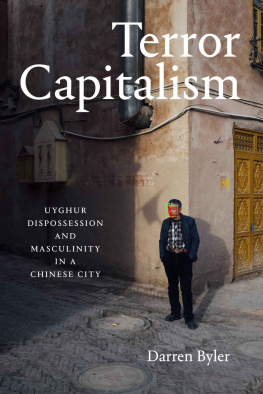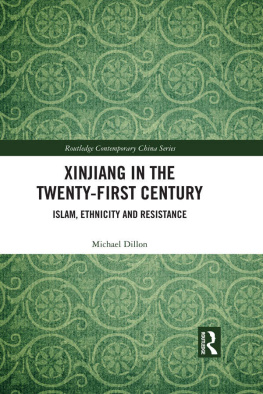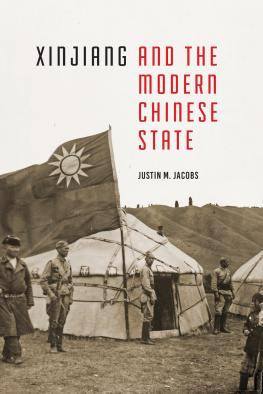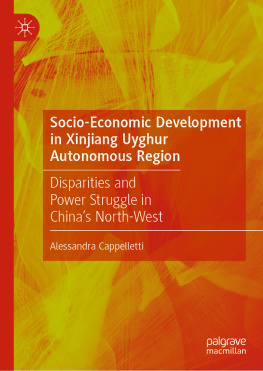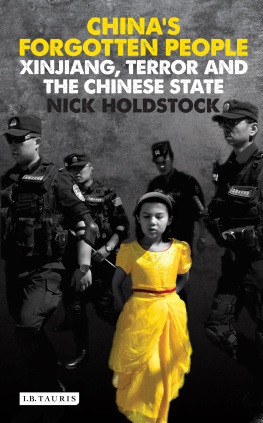I have incurred numerous obligations in the research and publication of this book. My greatest debts have been to the Uyghurs, Chinese, and Mongols who allowed me to interview them. They will remain nameless, but I cannot sufficiently thank them for their candor and often their hospitality. The Smith Richardson Foundation provided me with a fellowship that offered opportunity for travel and time to undertake the research and writing of this work, though the Foundation is not responsible for the views presented here. I am grateful to Professors Dru Gladney and Ildik Bellr-Hann with whom I consulted about possible interviewees in this field. Professor Don Wyatt of Middlebury College and Professor Marsha Weidner of the University of Kansas invited me to give talks on my ongoing research. Professor Jeremy Murray of California State University at San Bernardino arranged for me to lecture at the University of Southern California, Pomona College, University of California at Los Angeles, University of California at San Diego, and California State University at San Bernardino mostly on the Mongols, but I also talked about my research on the Uyghurs. My wife and I traveled with Arienne Dwyer of the University of Kansas in Xinjiang, and she proved to be an invaluable guide to developments in the region, although she has differing views than I express here. These former and current students have been important sounding boards for the ideas presented in my books: Dr. Darren Byler of Simon Fraser University, Professor George Kallander of Syracuse University, and Professor Benno Weiner of Carnegie Mellon University. I am indebted to two anonymous reviewers who provided invaluable suggestions.
I have also been extraordinarily fortunate for fifty-five years of marriage to Mary, whose wit, intelligence, and public spirit has enriched both of our lives. The family we developed has been inspiring. I am grateful to Amy, Tony, Howard Sterinbach, Dr. Anna Rossabi, Sarah Sterinbach, Nathan Sterinbach, and Julia Rossabi for often humoring their father and grandfather.
I refer the reader to books on Xinjiang, but not articles, which may be difficult to access. The works on the post-1949 period represent a diversity of views, not just my own. I regret that articles by such individuals as James Leibold, Rmi Castets, and others who have different viewpoints are not included.
GENERAL WORKS
Millward, James. Eurasian Crossroads: A History of Xinjiang. New York: Columbia University Press, 2007.
Rossabi, Morris. China and Inner Asia from 1368 to the Present Day. London: Thames and Hudson, 1975.
HISTORY TO 1949
Barber, Elizabeth. The Mummies of Urumchi. New York: Norton, 1999.
Barnett, A. Doak. China on the Eve of Communist Takeover.New York: Praeger, 1963.
Benson, Linda. The Ili Rebellion: The Moslem Challenge to Chinese Authority in Xinjiang, 19441949. Armonk, NY: Sharpe, 1990.
Brophy, David. Uyghur Nation: Reform and Revolution on the Russia-China Frontier. Cambridge, MA: Harvard University Press, 2016.
Danielson, Sarah. The Explorers Roundup to National Socialism: Sven Hedin, Geography, and the Path to Genocide. Farnham, UK: Ashgate, 2012.
Forbes, Andrew. Warlords and Muslims in Chinese Central Asia: A Political History of Republican Xinjiang. Cambridge: Cambridge University Press, 1986.
Golden, Peter. Central Asia in World History. Oxford: Oxford University Press, 2011.
Hansen, Valerie. The Silk Road: A New History. New York: Oxford University Press, 2012.
Hopkirk, Peter. Foreign Devils on the Silk Road. London: John Murray, 1980.
Kim, Hodong. Holy War in China: The Muslim Rebellion and State in Chinese Central Asia, 18641877. Stanford, CA: Stanford University Press, 2004.
Kim, Kwangmin. Borderland Capitalism. Stanford, CA: Stanford University Press, 2016.
Klime, Ond ej. Struggle by the Pen: The Uyghur Discourse of National and National Interest, 19001949




